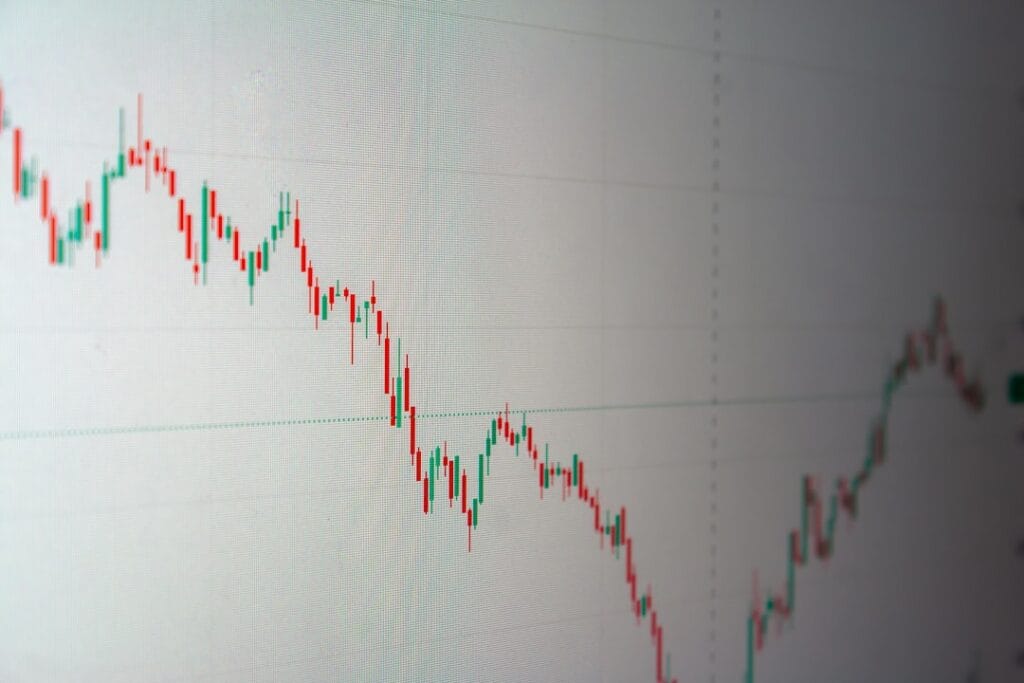When you first delve into the world of cryptocurrency, one of the first concepts you encounter is that of cryptocurrency exchanges. These platforms serve as the marketplace where you can buy, sell, and trade various cryptocurrencies. Think of them as the digital equivalent of a stock exchange, but instead of stocks, you are dealing with digital currencies like Bitcoin, Ethereum, and countless altcoins.
Understanding how these exchanges operate is crucial for anyone looking to invest or trade in cryptocurrencies. Cryptocurrency exchanges can be broadly categorized into two types: centralized and decentralized. Centralized exchanges are operated by companies that facilitate trading between buyers and sellers.
They often provide a user-friendly interface, making it easier for newcomers to navigate the complexities of cryptocurrency trading. On the other hand, decentralized exchanges operate without a central authority, allowing users to trade directly with one another. While they offer greater privacy and control over your funds, they can be more challenging to use, especially for beginners.
Familiarizing yourself with these distinctions will help you make informed decisions as you embark on your trading journey.
Key Takeaways
- Cryptocurrency exchanges are platforms where you can buy, sell, and trade digital currencies.
- When choosing a cryptocurrency exchange, consider factors such as security, fees, available trading pairs, and user interface.
- Setting up an account on a cryptocurrency exchange typically involves providing personal information and verifying your identity.
- Depositing and withdrawing funds on a cryptocurrency exchange can be done through various methods such as bank transfers, credit/debit cards, and cryptocurrency transfers.
- Understanding trading pairs is essential for successful trading, as it involves exchanging one cryptocurrency for another at a specific rate.
Choosing the Right Cryptocurrency Exchange
Selecting the right cryptocurrency exchange is a pivotal step in your trading experience. With numerous options available, it’s essential to consider several factors before making your choice. Start by evaluating the exchange’s reputation and reliability.
Look for reviews and feedback from other users to gauge their experiences. A well-established exchange with a solid track record is often a safer bet than a newer platform that may not have proven itself yet. Another critical aspect to consider is the range of cryptocurrencies offered on the exchange.
If you have specific coins in mind that you wish to trade, ensure that the platform supports them. Additionally, examine the trading fees associated with each exchange. Some platforms charge higher fees for transactions, which can eat into your profits over time.
By comparing different exchanges based on these criteria, you can find one that aligns with your trading goals and preferences.
Setting Up Your Account

Once you’ve chosen an exchange that suits your needs, the next step is to set up your account. This process typically involves providing some personal information, such as your name, email address, and sometimes even identification documents for verification purposes. This step is crucial for ensuring compliance with regulations and maintaining the security of the platform.
After submitting your information, you will likely receive a confirmation email to verify your account. Once verified, you can log in and explore the features of the exchange. Take your time to familiarize yourself with the interface and available tools.
Many exchanges offer tutorials or guides to help new users navigate their platforms effectively. Setting up two-factor authentication (2FA) is also highly recommended to add an extra layer of security to your account.
Depositing and Withdrawing Funds
| Metrics | Depositing Funds | Withdrawing Funds |
|---|---|---|
| Processing Time | Instant | 1-3 business days |
| Minimum Amount | 10 | 20 |
| Maximum Amount | No limit | 5,000 per day |
| Fees | No fees | 2% of the withdrawal amount |
With your account set up, you are now ready to deposit funds and start trading. Most exchanges offer various methods for depositing money, including bank transfers, credit cards, and even other cryptocurrencies. Each method has its pros and cons regarding speed and fees, so choose one that best fits your needs.
For instance, bank transfers may take longer but often incur lower fees compared to credit card transactions. When it comes to withdrawing funds, the process is generally straightforward but can vary between exchanges. Be sure to check the withdrawal limits and any associated fees before proceeding.
It’s also wise to familiarize yourself with the withdrawal process to avoid any delays when you want to access your funds. Understanding these aspects will help ensure a smooth experience as you transition from depositing to trading and eventually withdrawing your earnings.
Understanding Trading Pairs
As you begin trading on an exchange, you’ll encounter the concept of trading pairs. A trading pair consists of two different cryptocurrencies that can be exchanged for one another. For example, if you see a trading pair like BTC/ETH, it means you can trade Bitcoin for Ethereum or vice versa.
Understanding how these pairs work is essential for making informed trading decisions. When selecting a trading pair, consider factors such as liquidity and volatility. Liquidity refers to how easily you can buy or sell a cryptocurrency without significantly affecting its price.
Pairs with high liquidity are generally more favorable for trading since they allow for quicker transactions at stable prices. On the other hand, volatile pairs can present opportunities for profit but also come with increased risk. By analyzing these factors, you can better navigate the trading landscape and make strategic choices.
Placing Orders

Placing orders is a fundamental aspect of trading on cryptocurrency exchanges. There are several types of orders you can use, each serving different purposes depending on your trading strategy. The most common types are market orders and limit orders.
Limit orders, on the other hand, enable you to set a specific price at which you want to buy or sell a cryptocurrency. This approach gives you more control over your trades but may result in delays if the market doesn’t reach your desired price.
Security Measures
In the world of cryptocurrency trading, security should always be a top priority. The decentralized nature of cryptocurrencies makes them susceptible to hacking and fraud if proper precautions aren’t taken. To protect your assets, start by choosing an exchange that prioritizes security features such as two-factor authentication (2FA), cold storage for funds, and regular security audits.
Additionally, consider using hardware wallets for storing your cryptocurrencies outside of exchanges. These physical devices provide an extra layer of security by keeping your private keys offline, making it much harder for hackers to access your funds. Regularly updating your passwords and being cautious about phishing attempts are also essential practices in safeguarding your investments.
Fees and Charges
Understanding the fees associated with cryptocurrency trading is crucial for managing your investments effectively. Different exchanges have varying fee structures that can include trading fees, withdrawal fees, and deposit fees. Trading fees are typically charged as a percentage of each transaction and can vary based on whether you’re a maker (providing liquidity) or a taker (taking liquidity).
Before committing to an exchange, take the time to review their fee schedule thoroughly. Some platforms offer lower fees for higher trading volumes or specific payment methods, while others may have hidden charges that could catch you off guard later on. By being aware of these costs upfront, you can make more informed decisions about where to trade and how much you’re willing to invest.
Researching and Analyzing the Market
Successful trading requires more than just understanding how exchanges work; it also involves thorough research and market analysis. Familiarize yourself with various analytical tools and resources available online that can help you track market trends and price movements. Websites offering charts, news updates, and expert analyses can provide valuable insights into potential investment opportunities.
Additionally, consider following social media channels or forums where experienced traders share their strategies and insights. Engaging with the community can enhance your understanding of market dynamics and help you stay informed about upcoming events that may impact cryptocurrency prices. By dedicating time to research and analysis, you’ll be better equipped to make informed decisions in this fast-paced environment.
Using Mobile Apps for Trading
In today’s fast-paced world, having access to mobile trading apps can significantly enhance your trading experience. Many cryptocurrency exchanges offer mobile applications that allow you to trade on-the-go, monitor market trends in real-time, and manage your portfolio from anywhere with an internet connection. This convenience enables you to react quickly to market changes and seize opportunities as they arise.
When choosing a mobile app for trading, look for features such as user-friendly interfaces, advanced charting tools, and secure login options like biometric authentication. Additionally, ensure that the app provides notifications for price alerts or significant market movements so that you never miss an opportunity while away from your computer.
Tips for Successful Trading
As you embark on your cryptocurrency trading journey, keep in mind some essential tips that can help increase your chances of success. First and foremost, develop a clear trading strategy based on your financial goals and risk tolerance. Whether you’re looking for short-term gains or long-term investments, having a plan will guide your decisions and help you stay disciplined during market fluctuations.
Another vital tip is to practice patience and avoid emotional trading decisions driven by fear or greed. The cryptocurrency market can be highly volatile, leading many traders to make impulsive choices that result in losses. Instead, focus on conducting thorough research and sticking to your strategy even during turbulent times.
By maintaining a level-headed approach and continuously learning from both successes and failures, you’ll be better positioned for long-term success in the world of cryptocurrency trading. In conclusion, navigating the world of cryptocurrency exchanges requires careful consideration and informed decision-making at every step of the process—from choosing an exchange to executing trades securely. By understanding key concepts such as trading pairs, order types, security measures, and market analysis techniques, you’ll be well-equipped to embark on your trading journey with confidence.
Cryptocurrency exchanges have become a pivotal part of the digital economy, offering platforms for trading various digital assets. As these exchanges evolve, they are increasingly integrating advanced technologies to enhance security and user experience. A related article that delves into the transformative potential of technology in business is “Beyond Points and Discounts: How Token-Gated Loyalty Programs Can Transform Your Ecommerce Business.” This article explores how tokenization, a concept closely related to cryptocurrencies, can revolutionize loyalty programs in e-commerce. For more insights, you can read the full article here.
FAQs
What is a cryptocurrency exchange?
A cryptocurrency exchange is a platform that allows users to buy, sell, and trade cryptocurrencies. It acts as an intermediary between buyers and sellers and provides a marketplace for various digital assets.
How do cryptocurrency exchanges work?
Cryptocurrency exchanges work by matching buy and sell orders from their users. When a buyer and seller agree on a price, the exchange facilitates the transaction and charges a fee for its services.
What are the different types of cryptocurrency exchanges?
There are several types of cryptocurrency exchanges, including centralized exchanges (CEX), decentralized exchanges (DEX), and peer-to-peer (P2P) exchanges. Each type has its own unique features and benefits.
What are the risks of using cryptocurrency exchanges?
Some of the risks associated with using cryptocurrency exchanges include security breaches, hacking attacks, regulatory issues, and market volatility. Users should carefully research and choose a reputable exchange to mitigate these risks.
How can I choose the right cryptocurrency exchange?
When choosing a cryptocurrency exchange, consider factors such as security measures, user interface, trading fees, supported cryptocurrencies, customer support, and regulatory compliance. It’s important to conduct thorough research and read reviews before selecting an exchange.




